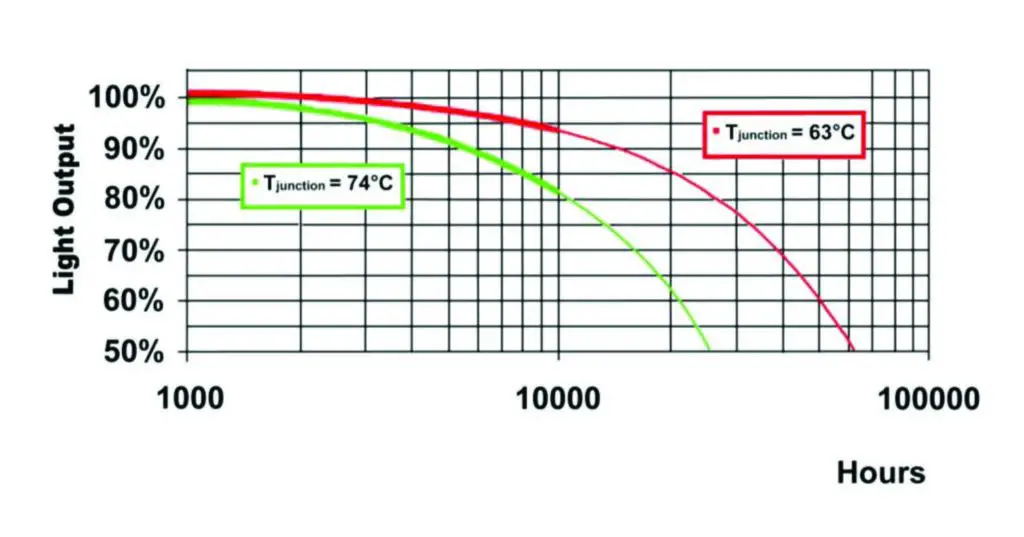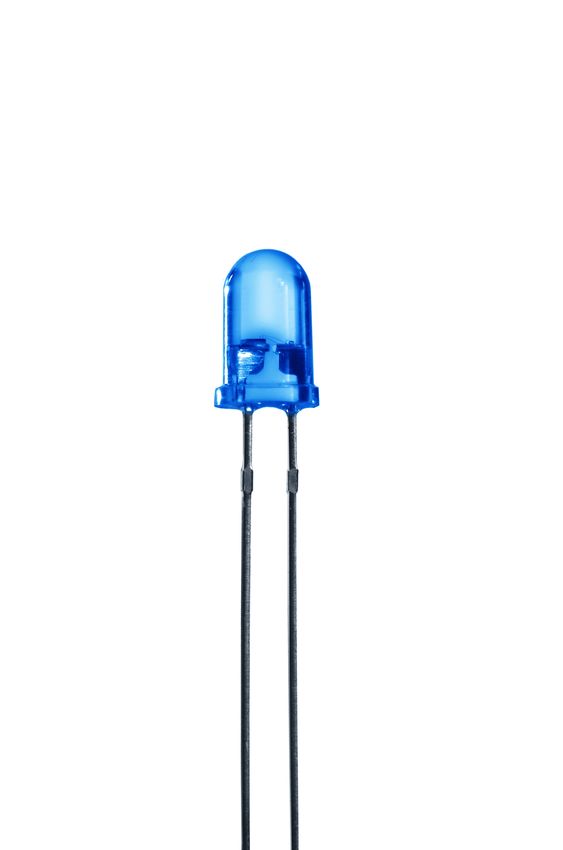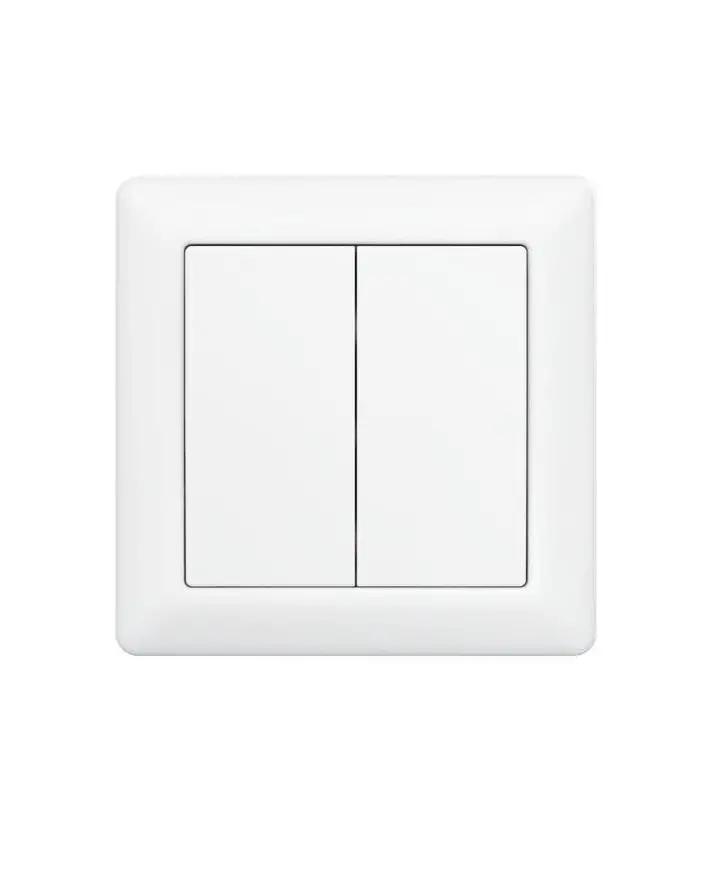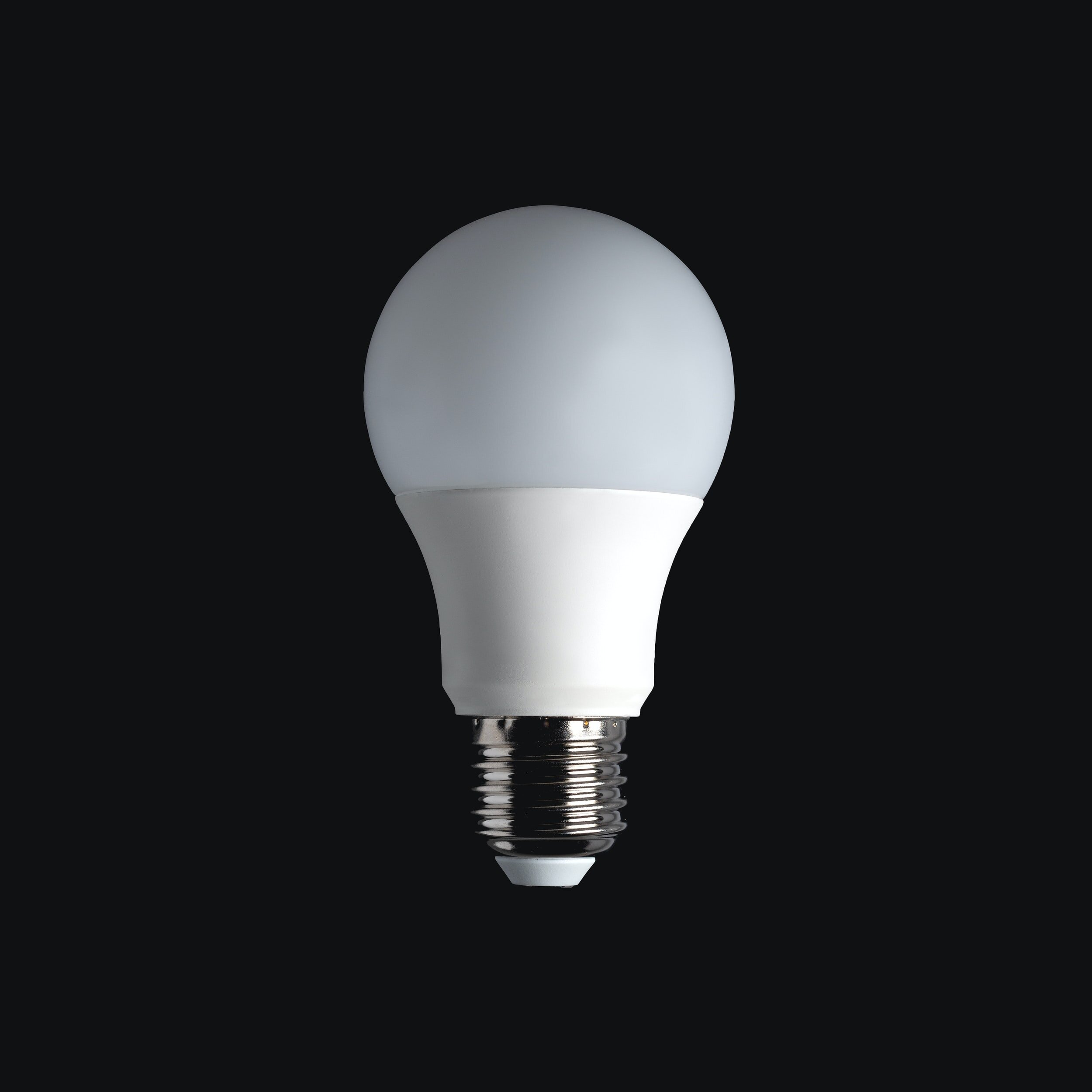Can LEDs Overheat And Become A Fire Risk?
When it comes to lighting and the different options for it, LEDs are often considered the current best option due to their high efficiency and general good quality of light.
However, one factor that is not often considered when saying this about LEDs is their level of risk compared to other bulbs available on the market. What is the point of switching to high-efficiency LEDs if you risk burning down your home in the process?
LEDs are generally not prone to extreme temperatures and are pretty safe in terms of fire safety. LEDs normally only reach temperatures as high as 80 °C (140°F) which is not nearly as hot as traditional bulbs would get under regular use.
In this article, we will continue to assess how much of a risk LED lighting is in comparison to the bulbs you already have in your home.

Contents
How Hot Do LEDs Normally Get?
In order to answer for the overheating and risks of LEDs we first need to set a baseline for how hot LEDs normally get under regular circumstances.
When an LED light is running in a room temperature area without having its airflow restricted it will reach temperatures of anywhere around 20-80 °C (68-140°F). For LED bulbs with a heatsink attached it has been found that the heatsink will reach temperatures of around 60°C-100°C (140°F-212°F).
For comparison, most older bulbs such as the incandescent bulb will reach temperatures of around 200-260 °C (392-500 °F) on the glass surface whereas on the inside where the glowing filament is it may reach temperatures of around 2500 °C (4600 °F).
The temperature can vary quite a lot since it can be affected by a variety of different factors such as:
Its surrounding temperature.
Restriction of airflow.
Presence/absence of a heatsink.
This number however measures the singular LED chips by themselves, meaning that the temperature also can increase or decrease depending on how tightly they are packed together.
This means that in an application such as strip lights they will likely be on the cooler side of the spectrum since the individual LED chips are placed with a fair distance between themselves whereas in an LED bulb they are packed quite tight most of the time to ensure an even light output from the bulb.
This however does almost never become problematic for LED bulbs due to the amount of heat actually being transferred to the outer shell of the bulb being far less than that produced in the chip. Most high-quality LED bulbs also have a form of a heatsink which helps with temperature management.
Can LEDs Overheat?
LEDs may overheat when their options for heat dissipation are limited and too much heat builds up in the light-producing junction in LED chips. To avoid overheating it is important to allow sufficient airflow as well as use a heatsink if possible due to the negative effects of excessive heat generation on LEDs.
One thing that is also not normally considered is that almost all LEDs require a driver that transforms the incoming AC current into something more manageable. This driver is also prone to generate a significant amount of heat due to the excess thermal energy being released in the electricity transformation.
Potential Causes For LEDs To Overheat
Now that we have established that it is possible for LEDs to overheat we can begin diving deeper into what some potential causes for this may be.
No Heatsink
One potential cause of LEDs overheating is the absence of a heatsink. The goal of a heatsink is to redirect the heat created in the LED chips in order to keep the operating temperatures in them as low as possible.
Heat sinks are used for just that, leading the heat away from the LED chips. It achieves this by reaching into the undersides of the LED chips with a thermally conductive material (most commonly aluminium) and leading the material to the ambient air that surrounds the heat sink.

This means that heat sinks are always facing outwards opposite of the direction the LED gives light from. In the scenario of an LED bulb that would mean that the heat sink would face towards the base of the bulb whereas the actual LEDs producing the light are facing outwards, which is the opposite direction relative to the heat sink.
As can be seen in the picture of an LED bulb, the heat sink leads the heat out from the LED chips themselves present in the bulb and out towards the base where the heat doesn’t affect the lighting.
If you are interested further we recommend you go to this highly informative post about LED Heat Sinks.
Enclosed Fixtures
Another important aspect of how LEDs can overheat is how they are situated, more specifically how much airflow they have. With a lot of airflow around the LED it will stay significantly cooler than an LED with little to no airflow.
On a technical level, this simply has to do with how heat is transferred via air and how a high airflow is more likely to bring that hot air away from the LED. On a simpler level, however, this can be compared to blowing on your food before eating it to cool it down.
For this reason, it becomes problematic for the LED when we put it inside an enclosed fixture. An enclosed fixture by nature allows for very little airflow, which will cause all the heat generated by it to get trapped in the fixture and eventually build-up to the point where the LED can sustain damages because of it.
High Surrounding Temperatures
One more factor to consider about overheating is in what environment the LED is placed. LEDs thrive when placed in cooler areas as excessive heat can damage them.
This is why it becomes important to a degree where the LED light is mounted. If the LED is mounted inside of a walk-in fridge it will last significantly longer than that same light mounted inside of a sauna.
Spikes In Voltage And Current
While this isn’t nearly as much of an active issue as the other points can be, random spikes in voltage can be something that causes an LED to overheat and possibly even burn out.
This is because every LED is designed to handle a specific current size, a size that should be listed somewhere in the lights product description. It is when this current size is exceeded that there is a chance for the LED to take damage.
This is why spikes in voltages can be damaging because the electrical voltage that the LED is attached to is directly proportional to the current going through it. In simpler terms, this means that the higher the voltage that the LED is connected to the higher the current will be, which can easily be enough to cause damage to it.
Spikes in voltage like this (also known as power surges) can be quite irregular and therefore also difficult to account for.
Spikes usually happen due to large changes in the electrical network, such as large electric loads starting/stopping but can also occurrences such as a lightning bolt striking a transformer. That being said, power surges most likely happen in such a way where it is out of your control, but they are worth knowing about.
These voltage/current spikes are only momentarily and may only last for a fraction of a second but can still be very damaging to electronics regardless.
Consequences Of LEDs Overheating
Now that we have discussed how exactly an LED may overheat we can begin to look at what the consequences of overheating may mean for the light source.
Shortened Lifespan
The main consequence of high exposure to heat is that the LEDs lifespan will be significantly shortened. This is mainly due to the electronic nature of LEDs, meaning that an increase in heat simply causes them to be less efficient and also die faster.

This has been proved by multiple tests where the junction inside of the LED is kept steady at different temperatures. The results of these tests is that LEDs with higher temperatures stop producing light a lot sooner than the cooler ones.
The lifespan can also decrease due to the heat causing physical damage to the components within the LED circuit. This type of damage also contributes to the lifespan of the LED, sometimes even causing it to stop working completely.
Decreased Light Quality
In relation to the lifespan of the LED decreasing with overheating the general quality of the light produced will also decrease due to the potential damages overheating can cause.
The quality of light may change due to overheating potentially causing changes in the semiconductor and junction which actually produces the light.
Deformation Of Bulb
Something else which may happen is that the plastic the frame of the LED is made out of may start to deform due to high temperatures. Even with cheap LEDs, they should almost never create enough heat to actually melt the plastic, but having it become slightly bent as a result of poor heat management is not unheard of.
Can LEDs Catch Fire?
Now that we have discussed the important factors of LED heat generation and how it can be impacted by it we can start looking at the general safety of LEDs from an overheating standpoint.
The short answer to if LEDs can catch fire or not is no, LEDs themselves are very unlikely to catch fire. When LEDs are provided with a current that is too large (which is the most common fire starter for electronics) they simply “pop” or maybe even cause a small explosion, however, they are very unlikely to actually catch fire.
They are also good in this regard because as soon as they pop/explode they stop allowing an electrical current to go through it, meaning that extra heat build-up due to an electrical overload is prevented.
While the LED chips themselves are highly unlikely to catch fire it is however possible for the materials it is connected to potentially catch fire. This risk is however extremely small and almost never happens, but it is worth noting that this can happen to LED lighting of lower quality.
Are LEDs A Fire Risk?
So are LEDs a fire risk when it comes down to it? No, they are not much of a risk at all. The temperatures LEDs reach are in a large majority of cases not enough to be considered a fire risk. If speaking purely from a temperature standpoint LEDs are in fact safer than just about any other option available due to their low operating temperature compared to other lighting options.
One form of LED that can be dangerous however is any form of Christmas decor lighting. In 2004-2008, an estimated 1,170 home fires per year began with decorations, which can be quite a scary statistic knowing that this could be you.
However, LEDs are not necessarily the only culprit here, since candles started 45% of home decoration fires total. This means that statistically speaking, live candles are just about as dangerous as LEDs are.
Conclusion
So what conclusion can we draw from this? Generally, LEDs are pretty safe. When installed properly and taken care of properly they last a long time without any issues.
However, properly taking care of them can be tricky as electronics tend to be very delicate in how they should be handled, which is why Christmas LED decor tends to be considered dangerous, as most of it gets thrown around year after year until it eventually breaks or causes other issues such as fires.
While these ideas can be scary it is important to acknowledge that these are mostly worst-case scenarios and are unlikely to happen to you assuming that you take good care of your LEDs.





